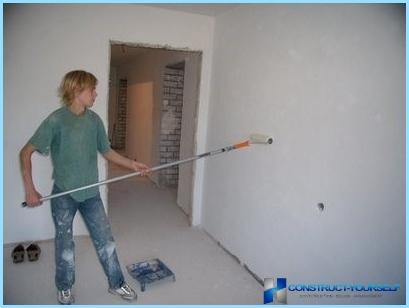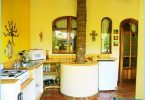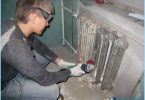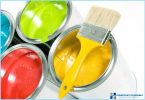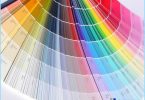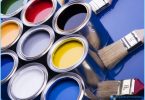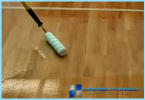The contents
Painting of different surfaces is not only a means to improve the aesthetic component of a room or building, but also an important means of protection. Thus, the painted surface is much less sensitive to moisture, temperature fluctuations, UV rays. Thus, depending on the composition of the paint layer, the surface (building wall, for example) can remain breathable, which prevents the accumulation of moisture, leading to mold formation and gradual destruction. One of the most preferred currently is the mineral paint, which is widely used for both internal and external works, combining reasonable cost, and high protective characteristics.
Mineral additives in paint ↑
If not so long ago was widely known almost exclusively white mineral paint, which was produced in powder form for self-thinning with water to desired consistency, today, available for sale there are mineral water-based compositions of different colors in which to add anything no longer needed. The main advantage of such coatings is their absolute ecological safety due to its content of purely natural, natural ingredients. Because these compositions contain a large quantity of water used as a solvent, they can work only with positive ambient temperatures.
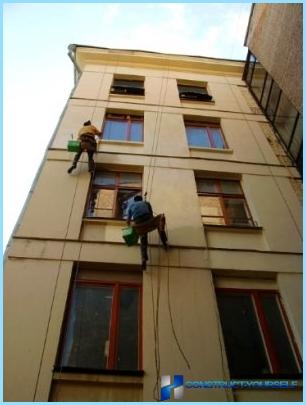
Mineral exterior paint forms a high-strength coating that is practically not subject to deformation during operation. Specifically designed for outdoor use mineral compositions are available in frost free version, and adding in their composition various additives in the form of synthetic resins and other components, significantly improves their properties, such as:
- the level of elasticity;
- the adhesion to the substrate;
- coverage, which reduces its consumption;
- resistance to moisture.
All the paint on mineral basis are divided into 4 main groups.
- Lime, based on slaked lime. To improve the characteristics of the composition, it is often added components such as sodium chloride or calcium, aluminum alum. This group is dominated by the compositions of bright colors, this paint is not durable, and cannot be used to protect plaster surfaces. Plus it can be considered quickly starting the process of carbonization of the lime framework, which improves performance characteristics of the premises.
- Cement paint, on the basis of white or colored cement. Its composition will be updated frequently slaked lime and calcium chloride, which increases water-holding capacity, and the introduction of the composition of calcium stearate (the water repellent) increases resistance of the paint to atmospheric influences. This mineral paint can be yellow or red, and also dark brown, and is used on all types of mineral substrates (concrete, brick, plaster). After application to the base requires moisture for a short period.
- Silicate – a mineral composition comprised of a suspension of pigments and fillers, which are characterized by their resistance to alkalis. In the role of silicatization use of calcium borate or zinc oxide. You can add and potash glass, and as alkali dye acts as a metal oxide or ochre, so this mineral paint is often yellow or brown, and can be used not only on concrete, stone, stucco or brick base, but also to protect goods from natural wood. The composition of silicate suspensions are often included filler in the form of quartz sand or diatomite.
- Oil is mineral compositions, grounded on different emulsions. Most often its role is linseed oil. Almost always in oil paint there are components that prevent the appearance in it of sediment during storage. Such compositions differ sufficiently resistant to adverse weather conditions and durability. Along with the excellent hiding power, oil composition has a significant drawback – a long drying time. Such a paint can be processed not only mineral substrates or wood, but metal construction.

The main advantages of mineral paints ↑
Depending on the species and part of the paint additives, it is possible to highlight the main advantages of using these dye compositions:
- health safety;
- resistance to dry and wet abrasion;
- water vapor permeability;
- before applying the Foundation does not require treatment with a primer;
- use in dry, damp and wet rooms;
- use on all types of mineral substrates, metal, wood, and paint is available for mineral wool.
Its wide application mineral composition received in ancient times. Mineral pigments are unable to fully displace the synthetic analogues, for example, mineral paints, mashed egg yolk (tempera), is still widely used in painting. The quality of mineral paint, depends largely on the crystallinity of the feedstock, natural mineral. On this basis the paint can be divided into two types – crystalline and amorphous (cryptocrystalline quartz) pigments.
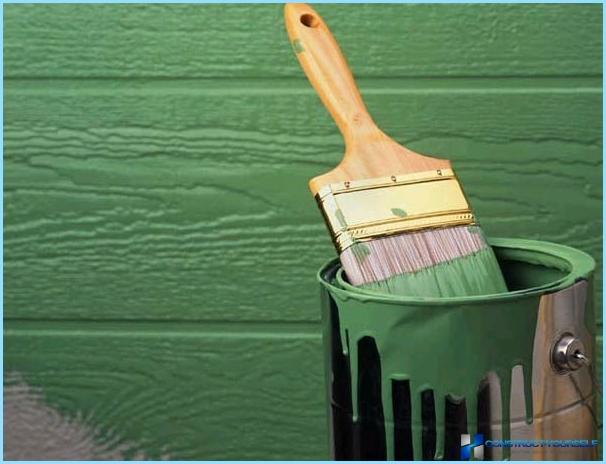
In the case of using a crystalline pigment composition acquires a special “interior” properties, because the smallest crystals of minerals have different light transmitting ability, and the surfaces painted, for example, a red mineral paint, when changing the angle of incidence of light, can change into different shades. Accordingly, such paints are highly original look on the facades of buildings, and the skilful combination of different shades will allow you to accentuate the architectural features of the house.
Maximum protection any facade ↑

Paint for mineral facades, if necessary, to avoid plastering. For example, a house built of such material as foam is highly undesirable to leave «as is». But to plaster a facade, you can not every part – for example, a standard cement mortar is not suitable as it will disrupt the process «breathing» in the wall of foam blocks. It is the mineral coloring composition to avoid plastering. Protects the surface and gives a great aesthetic characteristics of the simulated thick-layer silicate paint.
It perfectly fills the small imperfections in the walls (cracks, potholes), and with its help you can create various textured surfaces. For this, after application to a wall by any convenient tool or means at hand it applied the desired patterns, and attached to the invoice. The composition is sold in white, which you can pre-color, or to paint subsequently, any water-dispersion paints, glaze or scumbling compositions. How to work with textured paint can be seen on this video

